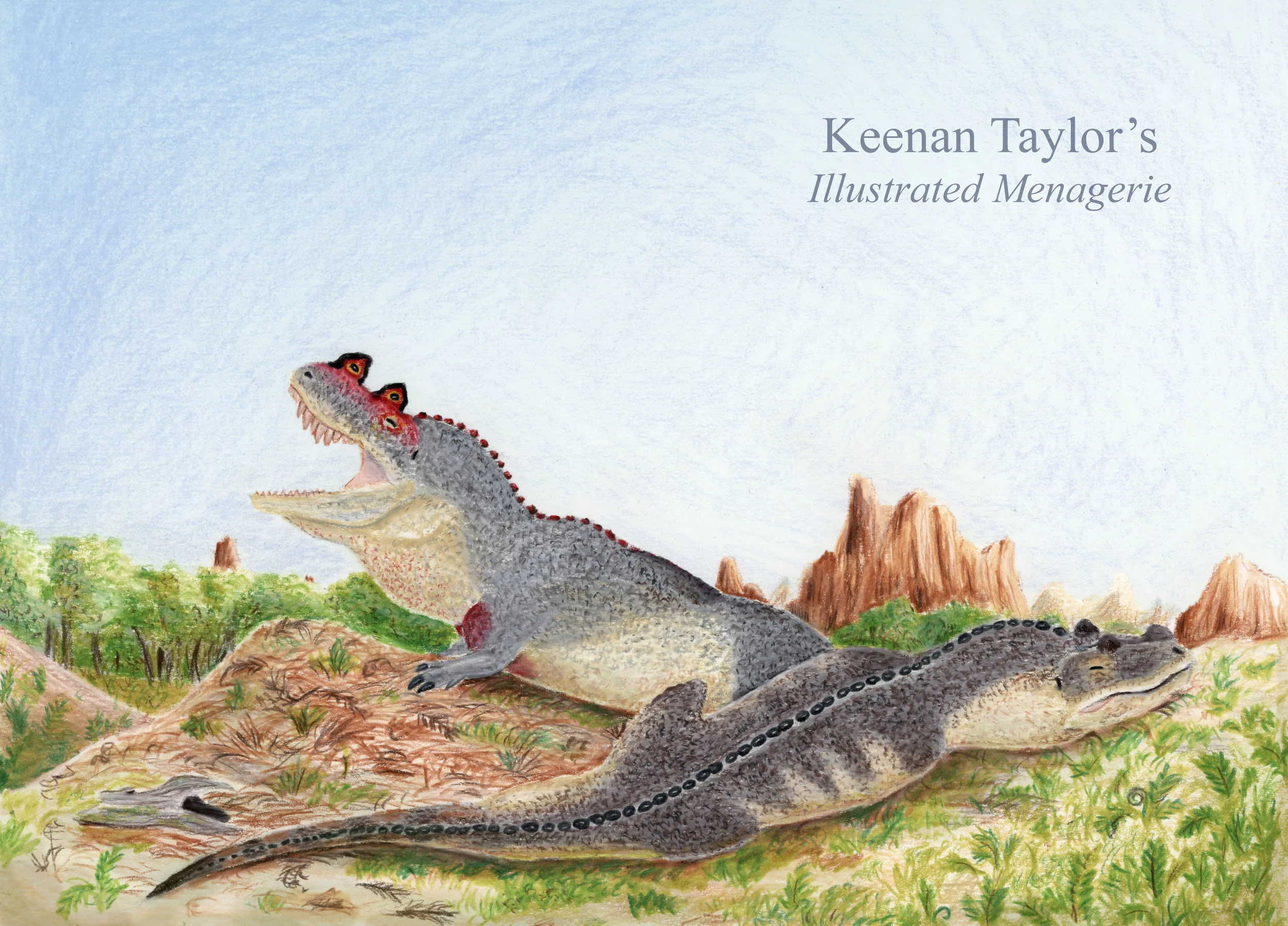
Tyrannosaurus Rex Family
One of the most fascinating things I've learned about Tyrannosaurus was its distinct growth stages. For several years after hatching they would have barely grown. The youngest specimen found was two years old and weighed around 60 pounds. Until about age 8-10 it seems they remained quite small. Although a number of theories can be proposed from this information, a popular theory is that they were given a degree of protection and care by their parents. Maybe they were successful small to medium independent predators, or perhaps they hunted in sibling gangs. It also is not known if Tyrannosaurus mated for life. If so, this increases the chances of long-term parenting behavior. Monogamy and childcare are well-documented in modern relatives, so it certainly isn't unprecedented. Personally, I think dedicated nuclear family units are reasonable to depict, and hope we get more clues in the behavior of Tyrannosaurus soon!


































